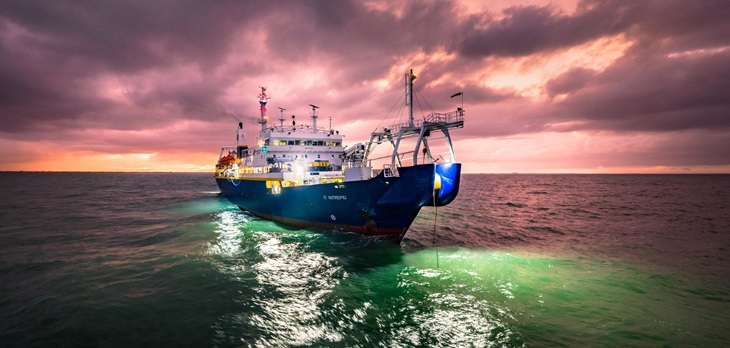
Telus last week announced the official start of installation work on its 125-kilometre-long submarine fibre-optic cable that will run from Sept-Îles to Sainte-Anne-des-Monts, providing redundancy to the telecom network serving communities between Baie-Comeau and Lourdes-de-Blanc-Sablon on Quebec’s North Shore.
This project, initially announced in 2020 and approved earlier this year, is backed by a joint investment of more than $20 million by Telus and the federal government.
“This deployment marks the culmination of several years of careful planning and represents a major technological turning point for the North Shore,” Nazim Benhadid, chief technology officer of Telus, said in a Friday press release. “By anchoring this fibre optic infrastructure on the seabed, we are creating a robust communications path that will ensure essential service continuity, especially during extreme weather conditions. Beyond the technology, this project will guarantee citizens reliable access to essential services, education, and healthcare. Investing in the resilience of our networks means investing in the future and prosperity of our communities and our country.”
“The entire population of Quebec should have access to reliable and affordable high-speed Internet services,” said Buckley Belanger, Canada’s secretary of state for rural development, in a statement. “The federal government’s investment, in collaboration with TELUS, will help improve network reliability for communities on the North Shore. The official start of this installation marks an important milestone in connectivity for these communities. The Government of Canada is proud to support this project with a financial contribution of up to $7.5 million.”
The federal government’s contribution to the project is coming via the Connect to Innovate program.
The submarine fibre cable installation work is being carried out in collaboration with IT International Telecom’s specialized teams, with the cable-laying operations expected to last 10 to 15 days, Telus said in its press release. IT International Telecom is using specialized vessels and precision equipment, including a cable ship equipped with seabed mapping instruments, sensors and ultra-precise navigation systems for burying the cable.
With an approximate diameter of three centimetres, the cable will be nearly 125 kilometres in length. More than 120 kilometres of the cable will be buried at a depth of nearly 1.5 metres, providing superior protection against potential damage, Telus said. In addition, the submarine cable offers massive bandwidth capacity, ultra-low latency and durability spanning several decades, while ensuring physical redundancy as part of Telus’s diversified route strategy in the region, Telus said.
During the cable installation, the IT International Telecom team will leverage a detection system combining thermal imaging, AI and human intelligence to prevent collisions and reduce noise impacts on marine mammals, which Telus called a first in Canada.
“This project represents one of the most stimulating technical challenges our team has undertaken in Eastern Canada,” said Naoufal Nadir, senior project manager at IT International Telecom, headquartered in Pointe-Claire, Quebec. “We are deploying our expertise in submarine installation to create a robust link that will serve the North Shore communities for decades. Every metre of cable installed brings us closer to the goal of truly resilient connectivity for this strategic region.”
Telus said in its press release the submarine cable is expected to be operational in the weeks following its installation.
Photo of IT International Telecom’s vessel the IT Intrepid courtesy of Telus



